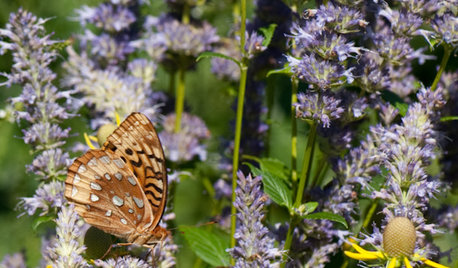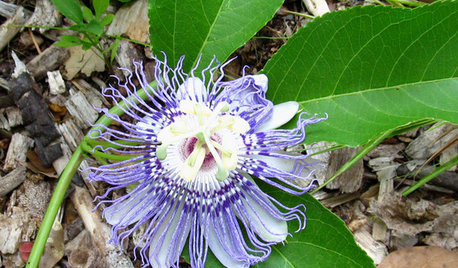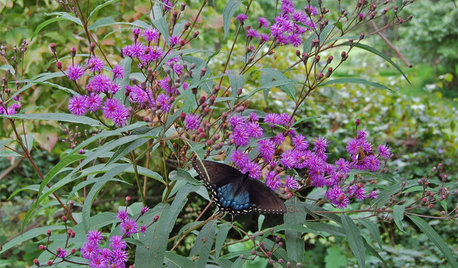Great Spangled Fritillary Caterpillars
bernergrrl
13 years ago
Related Stories

GARDENING GUIDESGreat Design Plant: Anise Hyssop Delights Licorice Lovers
With its distinct scent and flower spikes, drought-tolerant Agastache foeniculum stirs interest among humans and winged creatures alike
Full Story
GARDENING GUIDESGreat Design Plant: Passiflora Incarnata
Enjoy the amazing flowers and edible fruit of U.S. native Passiflora incarnata (also known as maypop) — the butterflies sure do
Full Story
GARDENING GUIDESGreat Design Plant: Vernonia Noveboracensis
Stately New York ironweed attracts pollinators with its blooms at the end of summer and birds with its seeds in fall
Full Story
GARDENING GUIDES6 Steps to Creating Your Butterfly Garden
Encourage these fanciful winged beauties to visit your garden while helping restore their fragmented habitat
Full Story
GARDENING GUIDES3 Ideas From the Evolving Garden
Life isn't predictable and neither is nature — and that's perfectly wonderful
Full Story
FALL GARDENINGWhat Monarch Butterflies Taught Me About Garden Design
Thinking like a butterfly leads to fresh perspectives in the garden and in life
Full Story
EARTH DAY‘Terroir’ Brings a Sense of Place to Your Landscape
Species native to and characteristic of your region firmly root your garden and landscape
Full Story
GARDENING GUIDESTop 10 Native Plants for the Northeast
For a low-maintenance, wildlife-friendly landscape, use native plants adapted to the climate and range of soils in the Northeast
Full Story





jrcagle
butterflymomok
Related Professionals
Wrentham Landscape Architects & Landscape Designers · Oconomowoc Landscape Architects & Landscape Designers · Summit Landscape Architects & Landscape Designers · Anderson Landscape Contractors · Danvers Landscape Contractors · Gallatin Landscape Contractors · Pikesville Landscape Contractors · South Lyon Landscape Contractors · New Carrollton Landscape Contractors · Camp Springs Landscape Contractors · East Haven Fence Contractors · Los Angeles Fence Contractors · North Miami Beach Fence Contractors · Whitman Fence Contractors · Pedley Window Contractorsjrcagle
bananasinohio
bernergrrlOriginal Author
MissSherry
bernergrrlOriginal Author
susanlynne48
bananasinohio
bernergrrlOriginal Author
susanlynne48
KC Clark - Zone 2012-6a OH
bananasinohio
bernergrrlOriginal Author
Mary Leek
jrcagle
MissSherry
MissSherry
bernergrrlOriginal Author
MissSherry
butterflymomok
jrcagle
ladobe
bernergrrlOriginal Author
ladobe
bananasinohio
ladobe
bernergrrlOriginal Author
butterflymomok
ladobe
bernergrrlOriginal Author
ladobe
bernergrrlOriginal Author
bernergrrlOriginal Author
MissSherry
butterflymomok
KC Clark - Zone 2012-6a OH